The published timetable for the day of action against the DSEi arms fair had ended with the protest outside BAE Systems, and I’d really spent long enough on my feet and was looking forward to going home and having dinner – as well as working on the many pictures I’d already taken. So I wasn’t too pleased when I was given the information that there would be another protest outside the National Gallery, and if it hadn’t been on my route home I might have decided enough was enough.
Although we were told to keep it quiet, I got the impression that the police already knew about it, and there were quite a few around as the protesters tried to enter the gallery. I was just behind the first group to go in the main entrance but hesitated about whether to go in. It is often a tricky decision, and I have no right to enter premises just because I’m carrying a camera and a press card when the staff are clearly trying to keep people out, although some photographers just rush in.
The gallery was just closing to the public, and I would have had to have joined the protesters in trying to push past the security staff to follow them. I think a few may have made it, but were fairly rapidly ejected. I decided instead to try to photograph the larger number of protesters who were still on the steps, ignoring the security men telling them to go down.
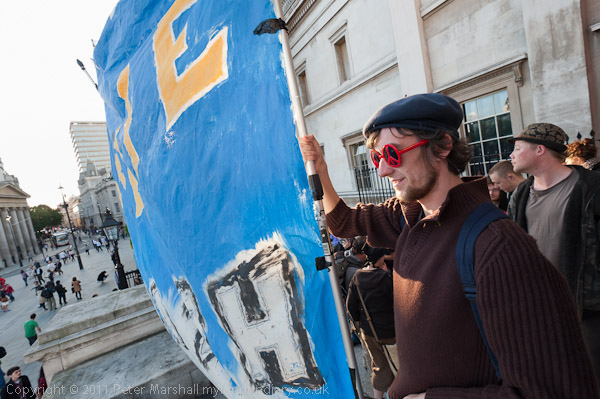
They were trying to put up banners, and so were right against the balustrade at the front, making it difficult to get a suitable angle. I took a few pictures, leaning out and even holding my camera further out, then decided to go down and photograph from in front of the building on the North Terrace of Trafalgar Square.
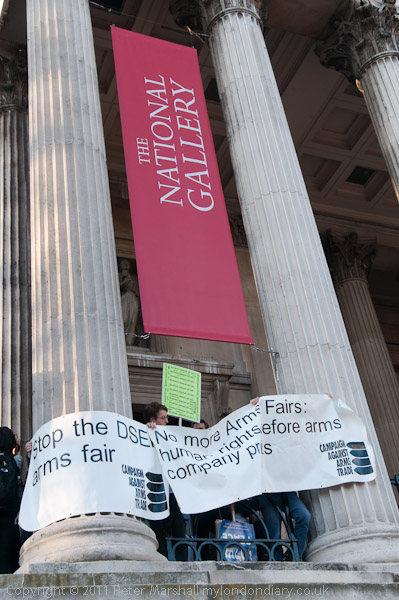
The protest developed, with a struggle going on with police to clear the steps, for some minutes by persuasion and then, after reinforcements had arrived, by force, which was more effective. There were some angry scenes as one or two protesters were dragged away to police vans from the steps, while others staged another die-in on the pavement and I ran back and forth trying to record both.
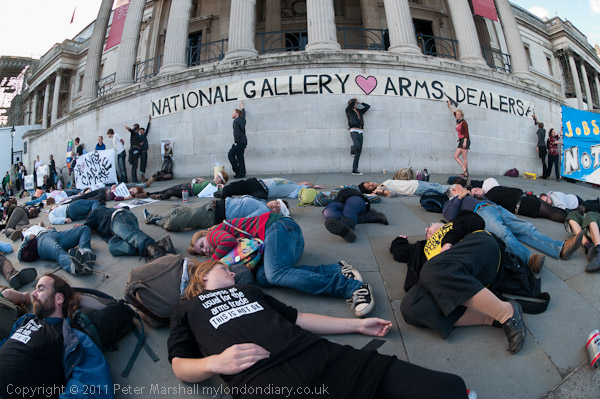
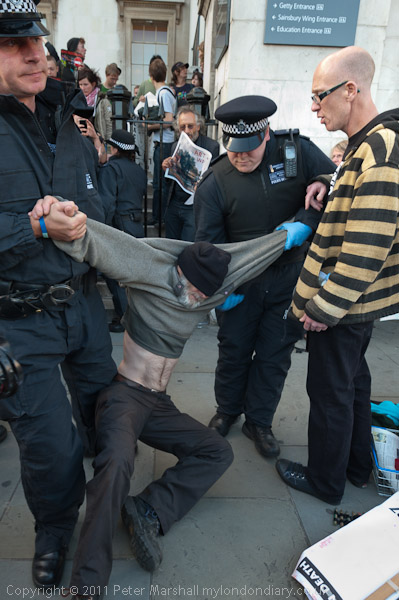
Then more officers still arrived, and one or two of them, including a senior officer, started to get very physical.
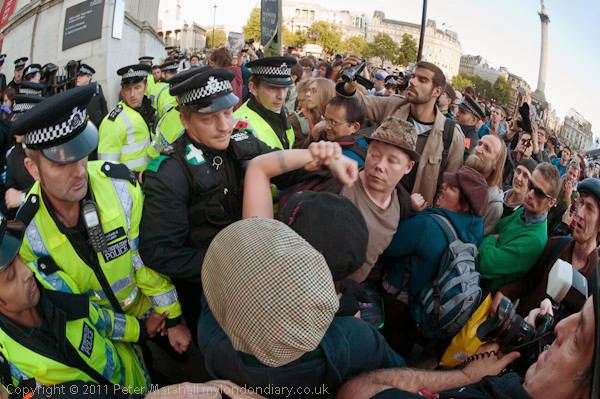
It is the kind of situation where to see anything you have to be very close (or very tall, which I’m not.) And very close in a crowd the 10.5mm can work well. Here I’m holding it up in the air at arms length to get pictures; with experience and checking on the rear screen it is possible to frame things with some accuracy, although there is still an element of chance. I wanted to put Nelson in the top right corner, and in this frame at least I more or less got him there. But the 10.5mm is a rather vulnerable lens, as it cannot take a filter, so does need a little care.
Most of the time I was photographing this fracas I was working with the 16-35mm, a nicely solid (but over-large) professional lens, which can take quite a bit of rough handling (and I’ve been through several filters on it.) It’s main weak point is the lens hood, and frankly the Nikon lens hoods are all pretty useless, flimsily made with an under-engineered bayonet mounting. One small tap and they either fall off completely or move around, producing vignetting at the corners. So of course it happened in that crowd, and I didn’t notice it until too late, working very much in the heat of the moment. I’ve cropped most of the pictures to remove as much of the vignette as I can, but you can still see it on some of the images.
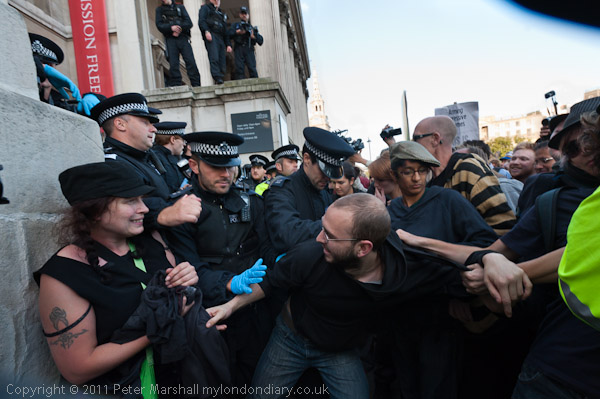
If you should lose or break your Nikon lens hood, don’t pay the arm and a leg Nikon ask for these few pence worth of plastic. The cheap replacements available on eBay are in my experience slightly better made and look as good. Of course they still suffer from the same Nikon fixing problem.
More on the event and more pictures at Arms Fair Fracas At National Gallery.